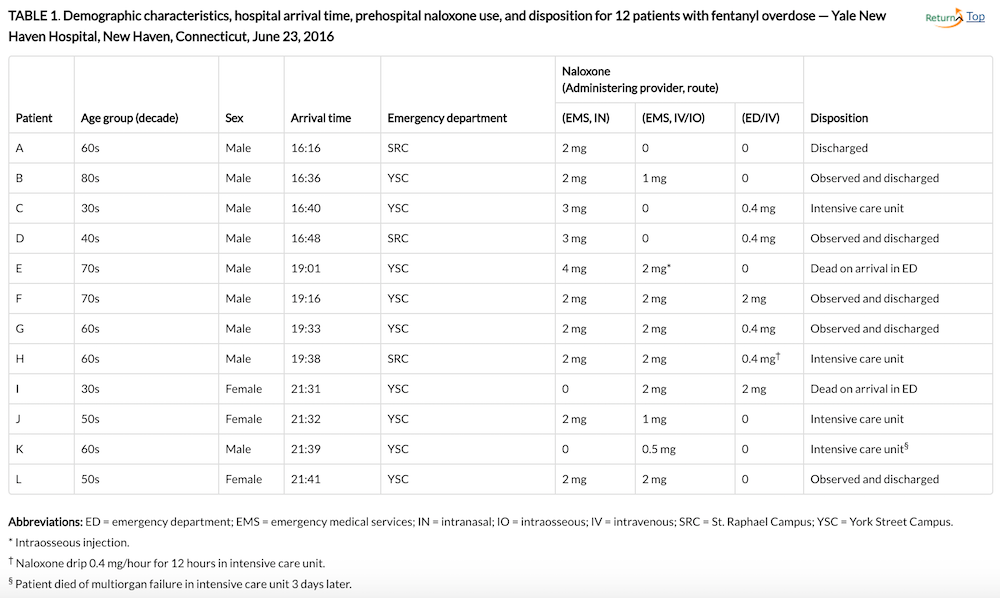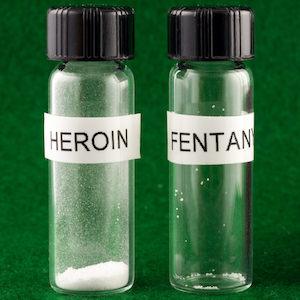There are many good reasons not to take drugs. Other than addiction and the possibility of overdose, the next best reason is that, Walter White notwithstanding, neighborhood chemists aren't terribly trustworthy. It is common for drugs to be mixed with other chemicals, some of which are far more dangerous than the drug itself.
The heroin epidemic sweeping the nation -- which has quadrupled heroin overdose deaths among people aged 25 to 34 and contributed to an increase in the overall mortality rate of young, white Americans -- serves as a case-in-point. Heroin is often mixed with fentanyl, a chemical that is 50 times more potent than morphine. Merely 3 mg, the mass of several grains of salt, is lethal. (See upper left image.)
Heroin isn't the only street drug that might contain fentanyl. In the latest issue of MMWR, the CDC reports that, on June 23, 2016, twelve people were taken to emergency rooms in New Haven, CT with symptoms of opioid overdose. But they hadn't taken heroin; instead, they had taken cocaine. Despite all twelve patients receiving the opioid "antidote" naloxone, two (Patients E and I) were dead on arrival and one (Patient K) died three days later in the ICU.

Subsequent investigations revealed that what had been sold as cocaine was mostly fentanyl with a trace amount of cocaine. The patients who were dead on arrival had gone into cardiac arrest due to blood concentrations of fentanyl that were much higher than what is administered therapeutically. (Fentanyl is used in hospitals as a painkiller at a blood concentration of 0.6 to 3.0 ng/mL or ppb). Patient E had a blood concentration of 11 ng/mL, while Patient I had 13 ng/mL. Patient K, who died a few days later, had 9.5 ng/mL. Patient F, who lived, had a concentration of 4.6 ng/mL, the highest among the survivors of this incident.
The report concluded that the victims were cocaine users, not opioid addicts, and hence were not prepared to recognize the effects of an opioid overdose. The authors suggest that all drug abusers -- not just opioid addicts -- should be provided with naloxone, just in case the drugs they take are adulterated with fentanyl.
That would almost certainly decrease opioid overdose deaths, but addicts should not place their faith in its curative powers. Of the twelve people who went into the ER that day, 25% didn't walk out.
Source: Tomassoni AJ, Hawk KF, Jubanyik K, et al. "Multiple Fentanyl Overdoses — New Haven, Connecticut, June 23, 2016." MMWR 66 (4):107–111. Published: 2-Feb-2017. DOI: 10.15585/mm6604a4.




